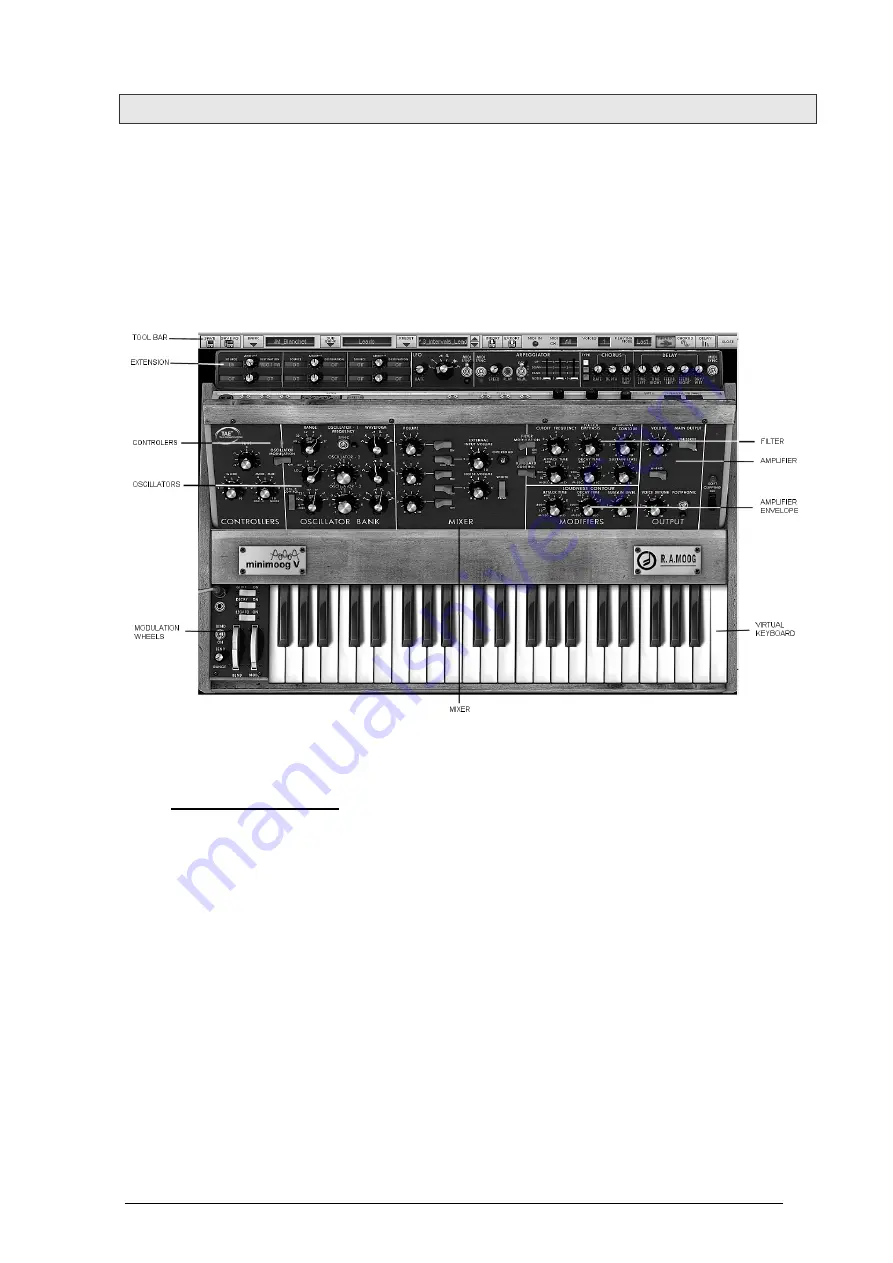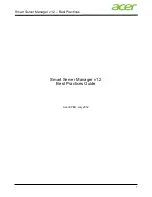
ARTURIA – minimoog V – QUICK START
1
1 MINIMOOG V - QUICK START
This chapter will help you get to know the main aspects of how the minimoog V works.
You will be presented an overview of the different parts of the synthesizer while using the
program for the first time. You will find a detailed description of all visible settings and
controllers in the chapters that follow.
Chapter 6,
A few elements of sound design
is specially recommended for users who have never
worked with a subtractive synthesizer before and who wish to learn the basics in this
domain.
Overview of the minimoog V
1.1 U
SING THE PRESETS
Use of presets is one of the major areas of evolution when the minimoog V is compared
to the original, which couldn’t save sounds!
With the minimoog V, a preset (memorized sound) contains all of the parameter settings
of the synthesizer plus the «extension» part and the different real-time and effect
controllers necessary to reproduce the sound.
To get to know a few of the different sounds contained in the minimoog V, we will select
the «Bass1» preset.
To do this, click on button above the «BANK» LCD display which indicates «Arturia»
(this display shows the name of the current bank in use). When you click, you will see
a dropdown menu indicating the available banks. Choose the «JM_Blanchet» bank.
When this menu is open, it expands the sub-menus allowing you to reach the «SUB
BANK» and «PRESETS» of a sound designer with a single click.
Choose the «SUB BANK» called «Basses» and finally select «JMB_Classic1» in the
«PRESETS».




























